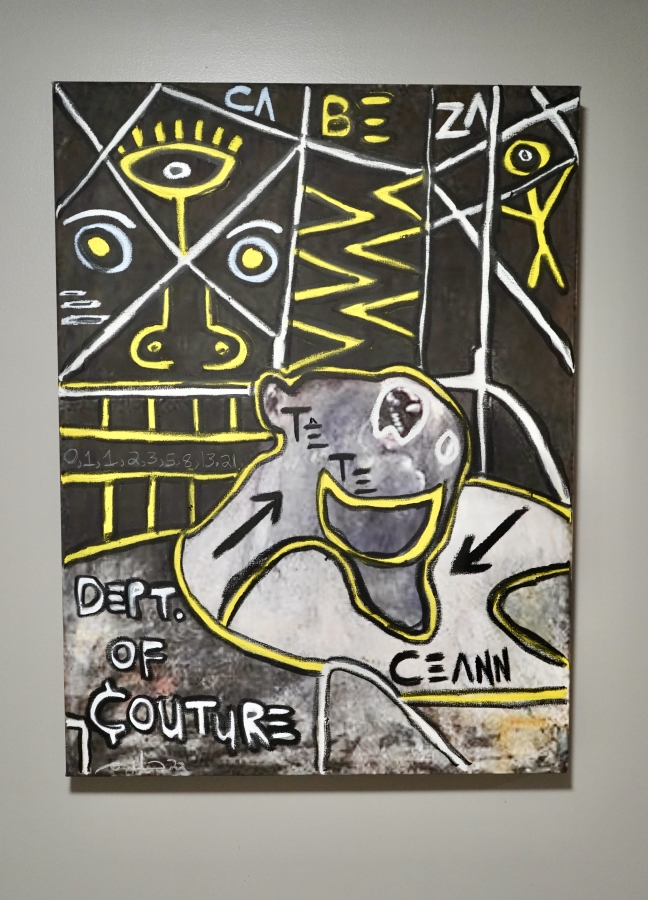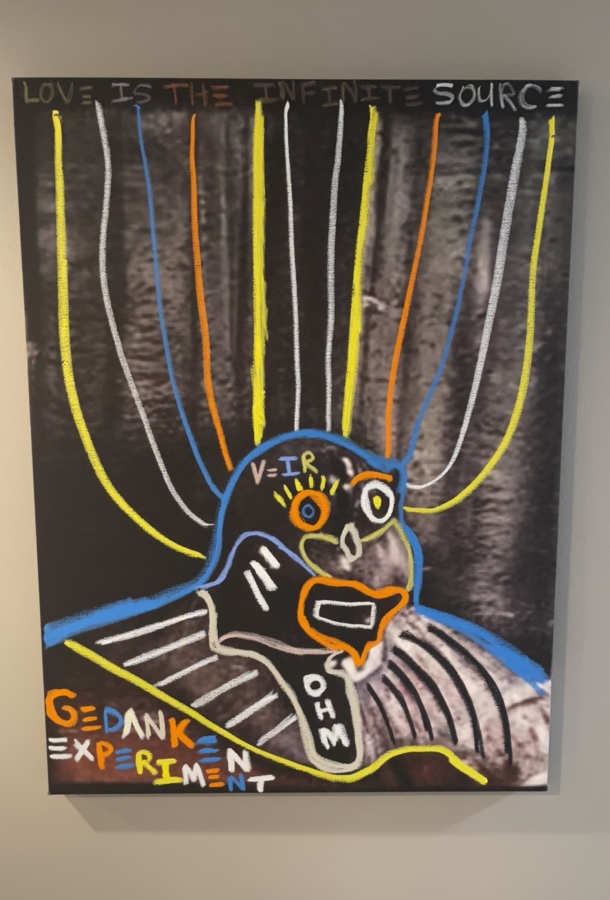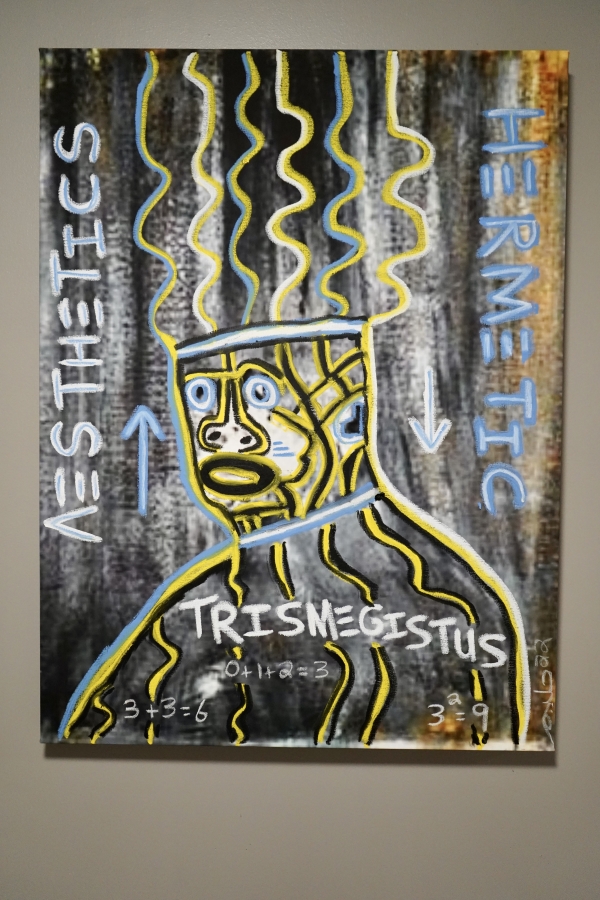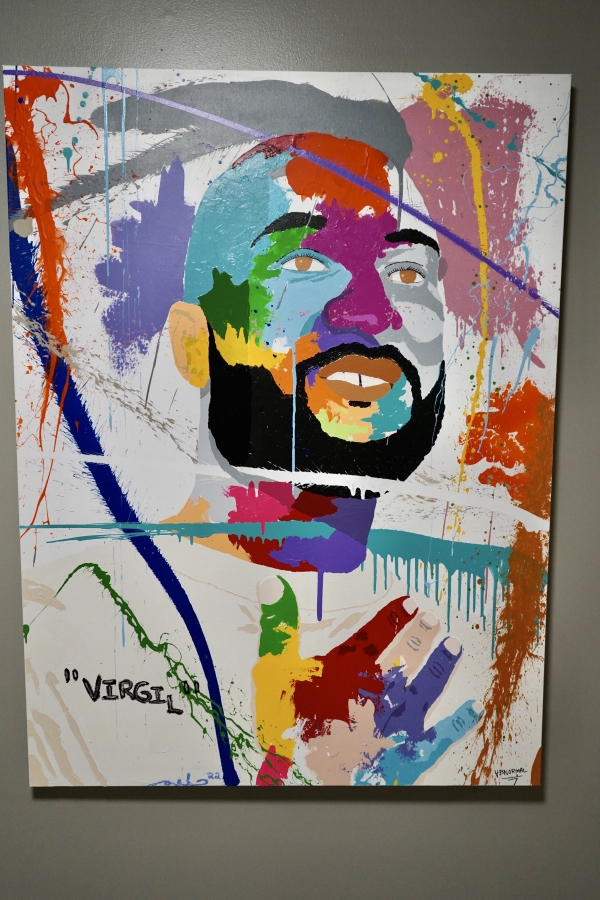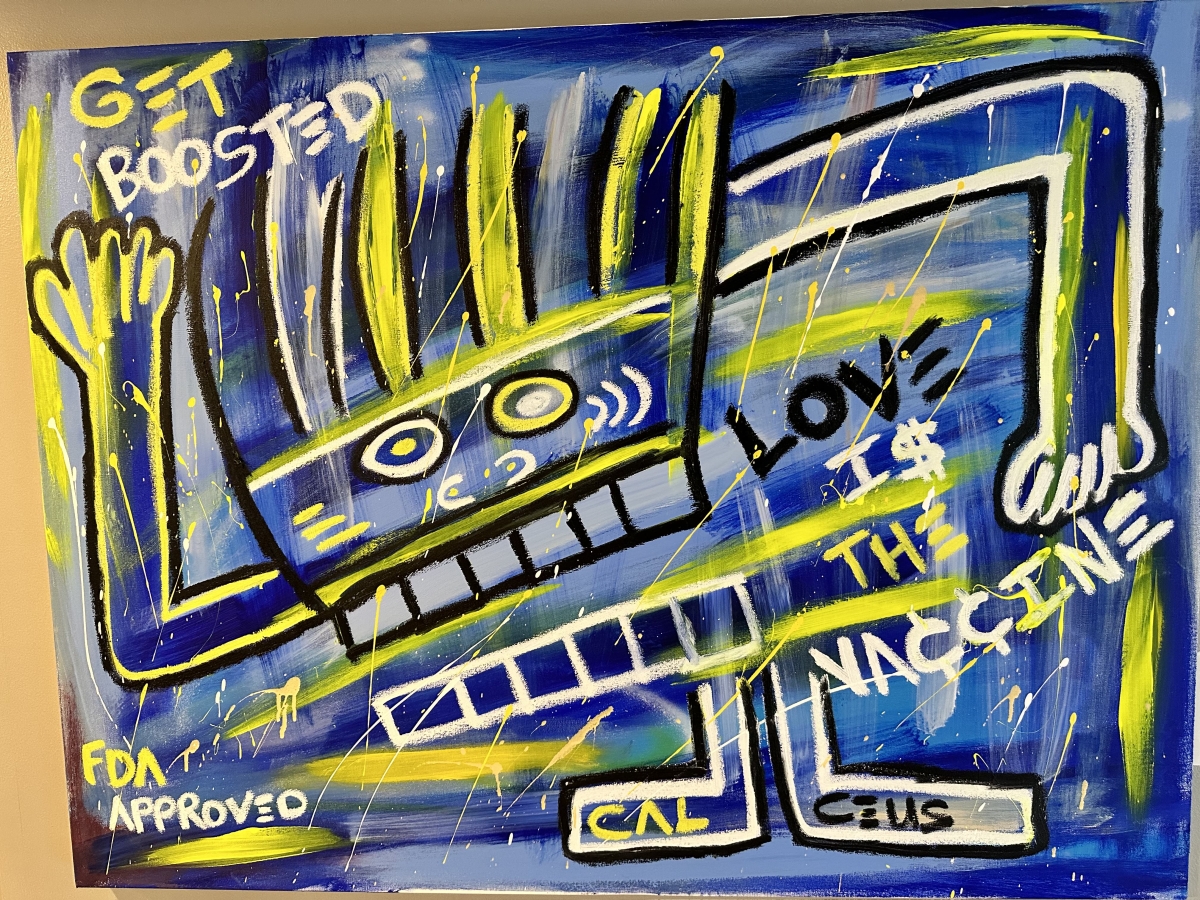
Artist’s Biography
Halim Flowers is an activist working between the visual and performing arts through a wide range of mediums including painting, sound, fashion, and performance. Art was Halim’s road to resilience and redemption. At age 16, he was arrested and sentenced to life in prison. At 41, 22 years behind bars, he was released after successfully petitioning for resentencing.
While in prison, Halim became a memoirist and poet with an irrepressible drive to make meaning out of darkness. Liberated through self-expression, he wrote and published 11 non-fiction works about the causes and consequences of the American prison system. He mentored incarcerated youths through D.C.’s Young Men Emerging program and took courses at Georgetown University through its Prisons and Justice Initiative. Halim’s experiences were captured in the Emmy award-winning documentary, Thug Life In DC. It’s powerful evidence of the persistence of human creativity in the most inhumane of circumstances. He refused to be rendered invisible.
In the aftermath of his incarceration, Halim became a husband and a father. It was his wife, the artist Lauren McKinney, who encouraged him to pick up a paintbrush. Halim has created a spectrum of colorful, politically charged paintings to reclaim the individuality and agency that gets broken down in carceral spaces. He keeps an aura of kindness and positivity, choosing to send a message of love even when the subject is serious.
Halim’s work has been exhibited at the MoMA PS1 and the National Arts Club in New York City. He is the recipient of numerous honors, including Halcyon Arts Lab and Echoing Green fellowships. He is a sought-after speaker and has been featured on panels at universities and conferences around the country. In 2022 he launched his own streetwear clothing brand and debuted at New York Fashion Week and released his first album of rap music called Ultracrepidarian which means one who speaks on matters in which they have no authority or one who gives an opinion on matters in which they have no knowledge.
“Others in the world approach me with pre-judgment as if I’m out of place and speaking out of place,” says Halim Flowers. “They question my authority to speak on the matters of which I speak or ask me questions like ‘did you ever think you would be here.?’ ‘You’ being the Superpredator, the menace to society, the one who was cast away to never return, the invisible man,” he continues.
“It’s the dichotomy of me having a sense of belonging and being worthy to be in the places that I’ve been and intend to be in the near future, and speaking on the matters that I choose to speak about or the things I choose to do, with authority. So that’s what this show is about – daring to ‘be’ unapologetically and share my truth with authority even in the presence of the entire world thinking that I shouldn’t.”
Halim Flowers’ body of work is a visceral, visual embodiment of the ambition of racial justice, prison reform, financial literacy, and transcending adversity, suggesting an immense sense of renewal, positivity, and hope.
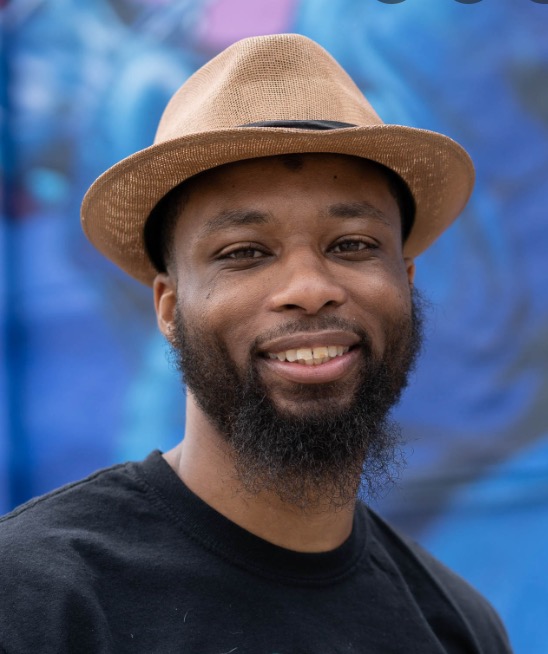
Interview
Artist: Halim Flowers
What is your favorite childhood memory?
My favorite childhood memory is of my home and family. The first home that I can remember was in Alexandria, Virginia when I was three years of age. I had my own bedroom, a dog for a brief period, a safe community, and both of my parents. My older sister, who had a different mother than I, and my older cousins would visit our house on the weekends and we would ride in the back of my dad’s pickup truck. I had no understanding of trauma, drug addiction, or gun violence during that period of my life. From the age of five till I was arrested at the age of sixteen, my childhood was inundated with trauma in compound interest.
How did you encounter literature and arts during your prison time?
Literature saved me from true confinement and mental limitations. Through literature, I learned Latin and properly studied the law so that I could appeal for my freedom by filing motions and briefs to the court of appeals. I began to grasp an understanding of economics and finance, their direct impact on my life, and how I would transcend my adversity of incarceration. Reading newspapers, magazines, books, especially autobiographies and self-help books such as the memoirs of Andrew Carnegie, Bernard Baruch, Malcolm X and Nelson Mandela, and Think and Grow Rich (Napoleon Hill), As A Man Thinketh (James Allen), A New Earth (Eckhart Tolle), and How To Love (Thich Nhat Hanh), is how I discovered the power to heal and be in the present moment with a self-appraisal for my humanity to move through the world with a sense of value to our human family.
I never invested much time into the visual arts in prison, ironically. Guys would invite me to the art department, but I could never seem to leave the library. My love for literature was insatiable.
However, through listening to Jay-Z’s music, I kept hearing him refer to ‘Basquiat.’ I had no idea whether this was a reference to an exotic island, fashion brand, or wine. I just kept hearing him mention it. And, in prison, I had no access to the internet, so I couldn’t search for information on Google. In prison, we only had access to encyclopedias.
Nonetheless, I eventually came across an article about Basquiat in the Wall Street Journal, a newspaper that I read faithfully while incarcerated. The article did not have any pictures of his paintings, just a small photograph of him. And, I was surprised that the art world held any reverence for a nappy-headed Black man who overdosed on heroin at the age of 27. This fascinated me, and I promised myself that I would start reading the Journal’s articles covering the other visual artists that Jay-Z referenced in his song ‘Picasso Baby,’ and that I would see Basquiat’s works when I was released.
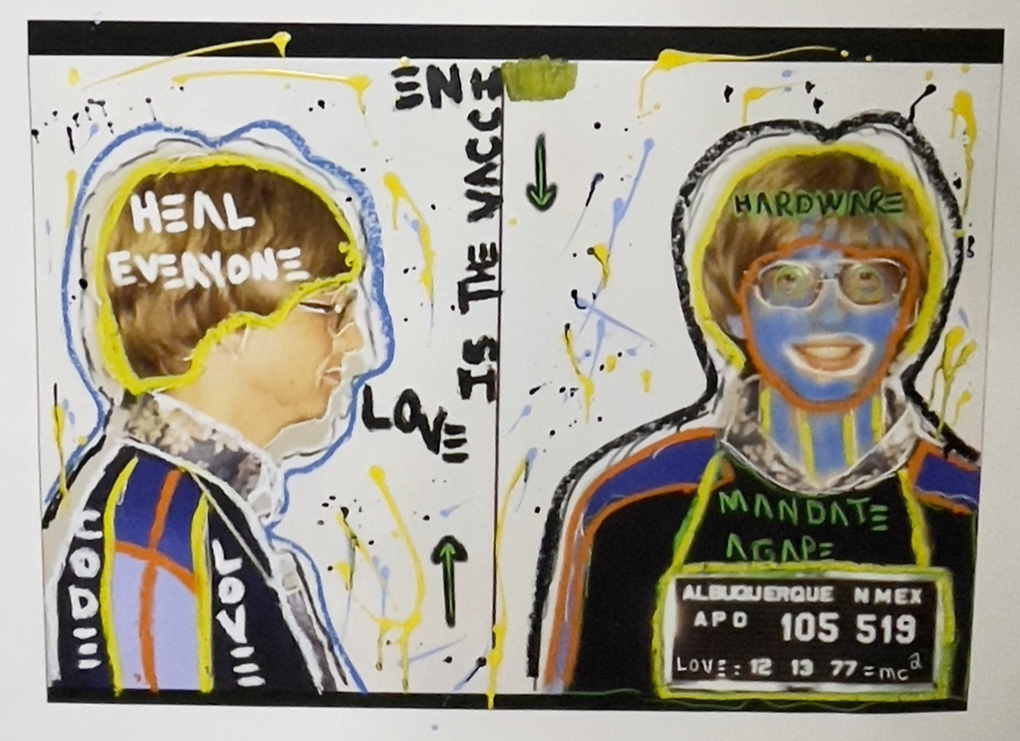
Paradoxically, many people tend to close in on their own fears and create a kind of mental prison that does not allow them to follow their dreams. What was it that allowed you to create from a place of uncertainty and give birth to new projects?
While I was incarcerated, books allowed me to become a time traveler. It informed me of how limited my thinking was, how small my perspective had been, and how many racial laws during the Jim Crow era had instilled a parochial view in the Black community by developing a reality where we had no reasonable expectations to consider more. Therefore, when Black people began to have the opportunities to pursue more than the prior generations, the fear of rejection and harm, along with generations of not having access to transcending cultural and social capital, created a culture of fear, anger, and low expectations.
Prison and physical confinement put me in a blessed position to be at the bottom of a bottomless pit. I had nothing; I could lose nothing. I had no fear to dream of something better and aspire for more, so I began to write about it. This writing led to me starting my own publishing company during my imprisonment. I published eleven non-fiction books covering the genres of self-help, financial literacy, poetry, and memoir.
Once I released my fears, along with my anger, embraced the weapon of love, learned how to heal instead of harm, and forgave myself and others comprehensively, nothing could stop me from giving birth to new ideas. Why? Because I had no fear of being rejected, and no expectations of being accepted. I just created from a space of love and joy, like I was as a child, with no peer influence to create something that others would enjoy.
Learning how to live with mindfulness, with a heart open to improvement and unconditional love, is the key to lasting liberation. Fear was the gatekeeper that just needed someone to love and hug them and to show them that the world is in abundance and that they no longer had to be confined by the scarcity mentality that creates prisons within prisons.
Talking about your art, how would you describe the creative process from the moment an idea arises to the final completion? Do you correct your work or do you leave it as is when you are finished?
I can begin by saying that I never ‘correct’ my art. Art is, for me, a journey that continues in perpetuity in so many different layers. The piece is never finished. I may finish applying paint to the canvas, but this is just the second stage, and definitely not the ending.
The first stage is the idea. And, as someone that consumes information infinitely, an idea for a painting can cover the topics of Philip Dick’s novel Ubik, the economic theory of laissez-faire, the Fibonacci sequence, mindfulness, Adam Smith’s Unseen Hand, and the Three Graces in Greek mythology. My mind is encyclopedic, and it is the only way that I can paint freely without thinking from my head while I am in the process of DJing this mad science through the paintbrush. It’s a schizophrenic process that allows me to take all of this information that resonates with me spiritually to create an infographic artifact that is more intellectually and aesthetically pleasing.
Once I am done painting, the oil stick applications on canvas may get smeared during shipping and delivery. The collector that purchases it may have someone, maybe a dog or a child, that adds something to the canvas. In addition, everyone that sees the piece will interpret it in their own unique way, which is how the piece continues in perpetuity. Even though no one may continue to add to the physical canvas, the interpretation and reimagining of it allows the work to live on in another dimension, a world of ideas where it originated. Wherefore, as Basquiat’s works have done for me, it can inspire another artist to create more paintings from that one piece.
It reminds me of how Loraine Hansberry wrote the play A Raisin In The Sun from a line in the poem ‘Dreams Deferred’ by Langston Hughes. This one line, in one poem, lives on in every performance or screening of that epic play that continues to be reimagined today.
So, you can see why I never correct my art, because it is not entirely my own to see any blemish in it that needs correction. I am just a vessel for a message to pass through on canvas with acrylic paint and oil sticks. From there, it takes a life of its own that could lead to a museum exhibition, a poem, a song, or a movie.
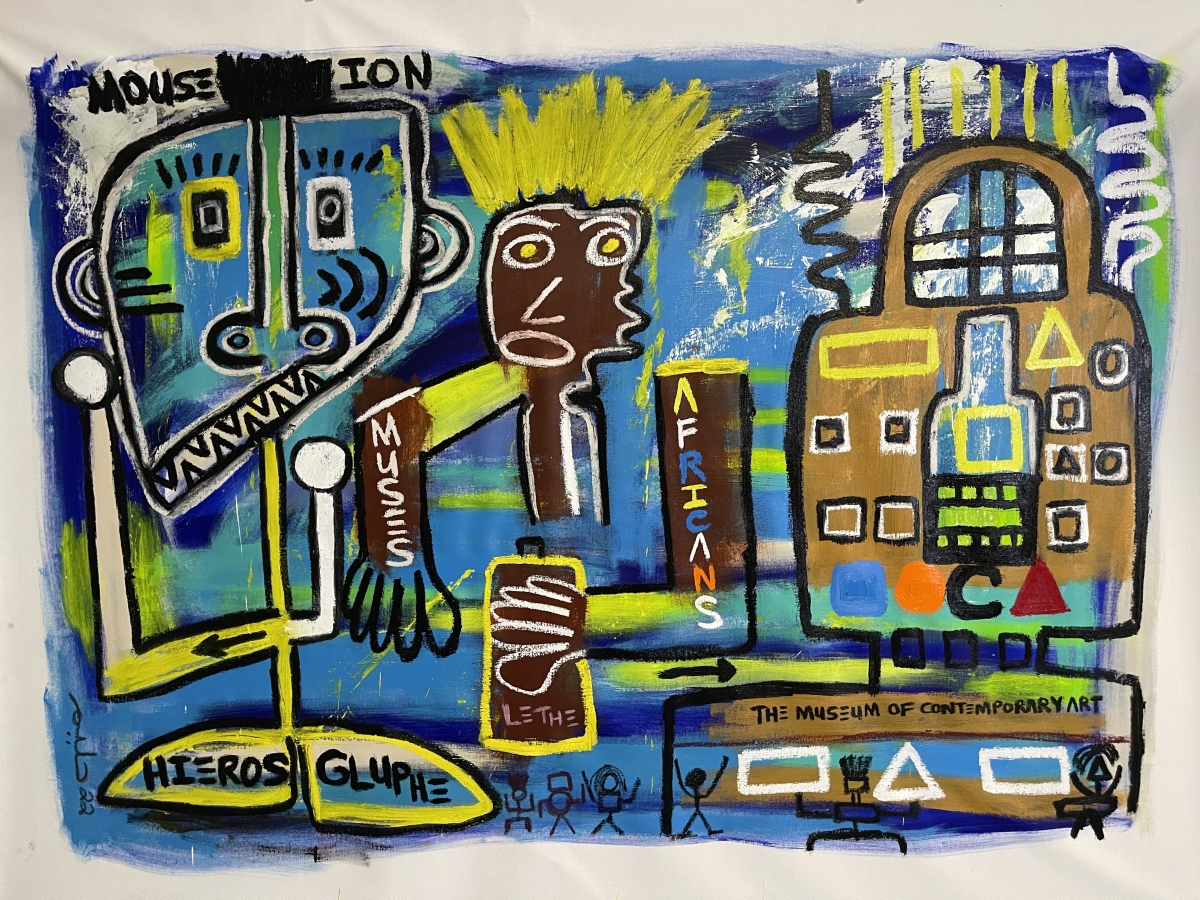
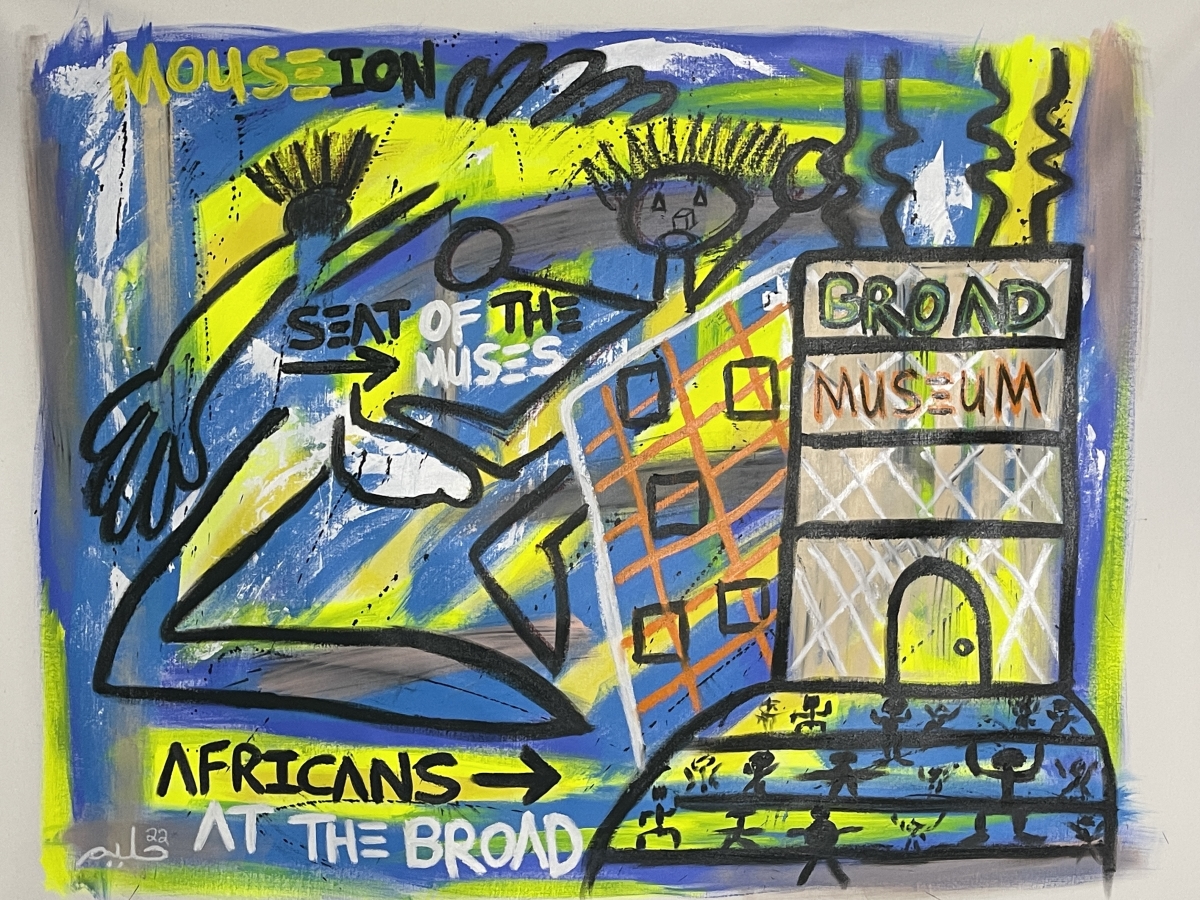
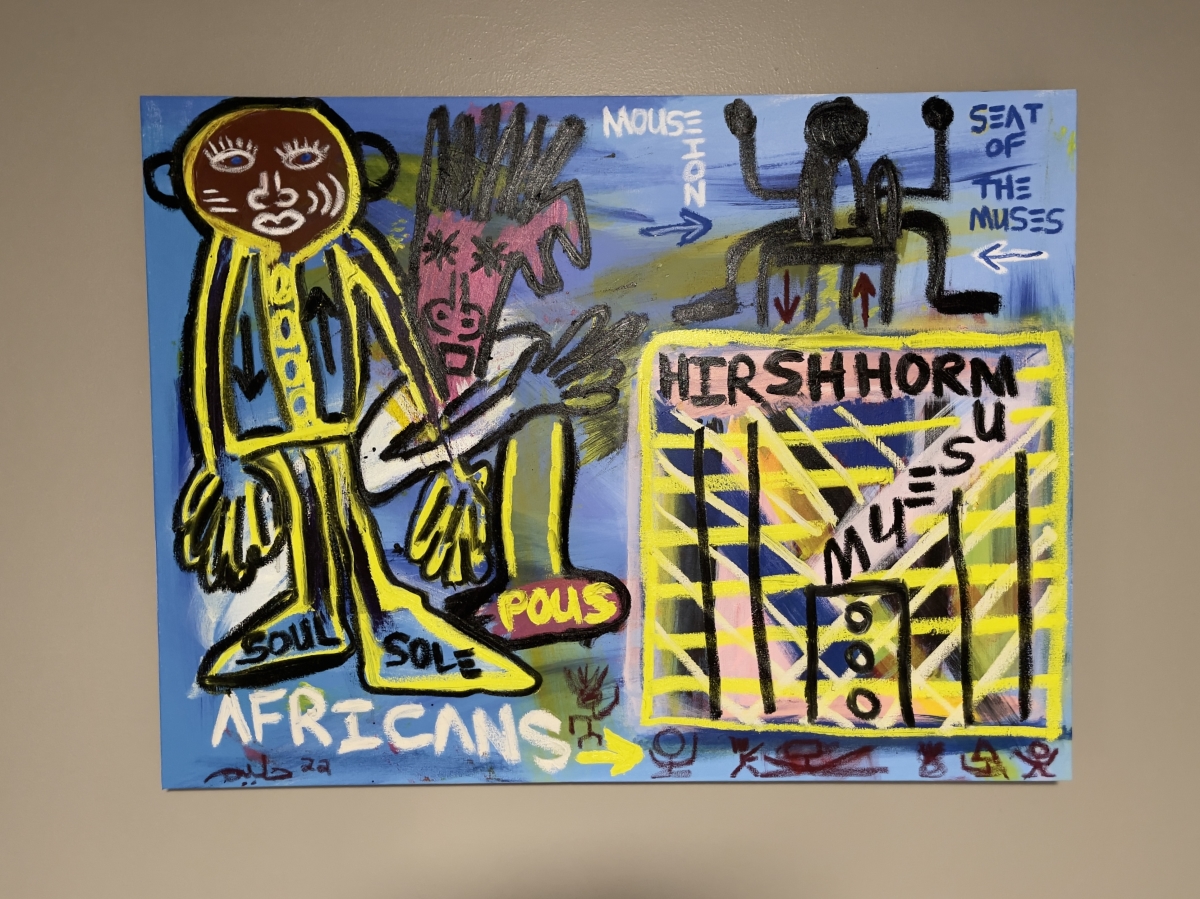
Can you describe your studio in Washington, DC and what things cannot be missed?
In 2021, I purchased a house in the Maryland suburbs of DC. I converted my garage into my home studio. I painted the floors and the walls, took pictures of it, and made it into a NFT collection that sold well. Here is the link to the collection:
https://opensea.io/collection/superpredatorslayhouse2021
You cannot miss the art in my studio. Literally, it’s everywhere. The walls, the floors, you can smell the oil sticks and spray paint. I have fashion items in my studio hanging that I upcycle with paint and spray paint. There are sewing machines and dumbbells, jump ropes, easels, sneakers, and denim jackets that I am experimenting on as canvases, as well as skateboards. I call it my laboratory and I feel like a rocket scientist and a rock star simultaneously.
Who are the creatives, musicians, actors, painters, filmmakers, and writers that have inspired you to create?
My top muses are definitely Jay-Z, Jean-Michel Basquiat, James Baldwin, and John Coltrane. Something about the J’s, I noticed. But I have also recently been inspired by Tyler, the Creator, Westside Gunn, and Donald Glover. I think that the ‘Atlanta’ show was genius. I’d love to create a series with Glover about my life. There’s also an artist named Lex Marie. I collect her works, and I’m really digging where she’s going beyond painting with her art. She’s gotten into three-dimensional pieces that are amazing.
Most of all, I was really inspired by Virgil Abloh last year. Having seen his exhibition at the ICA Boston just before his death, really sparked something in me to learn more about him and his works. I never knew that he did art and so many other things with design and architecture. Then, three months after seeing his exhibition, he died. And it made me study him even more. What inspires me mostly about Virgil is how he was a nice person. I want to be the artist that can make it by being loving and genuine and not mean and transactional in my relationships with humanity and industries.
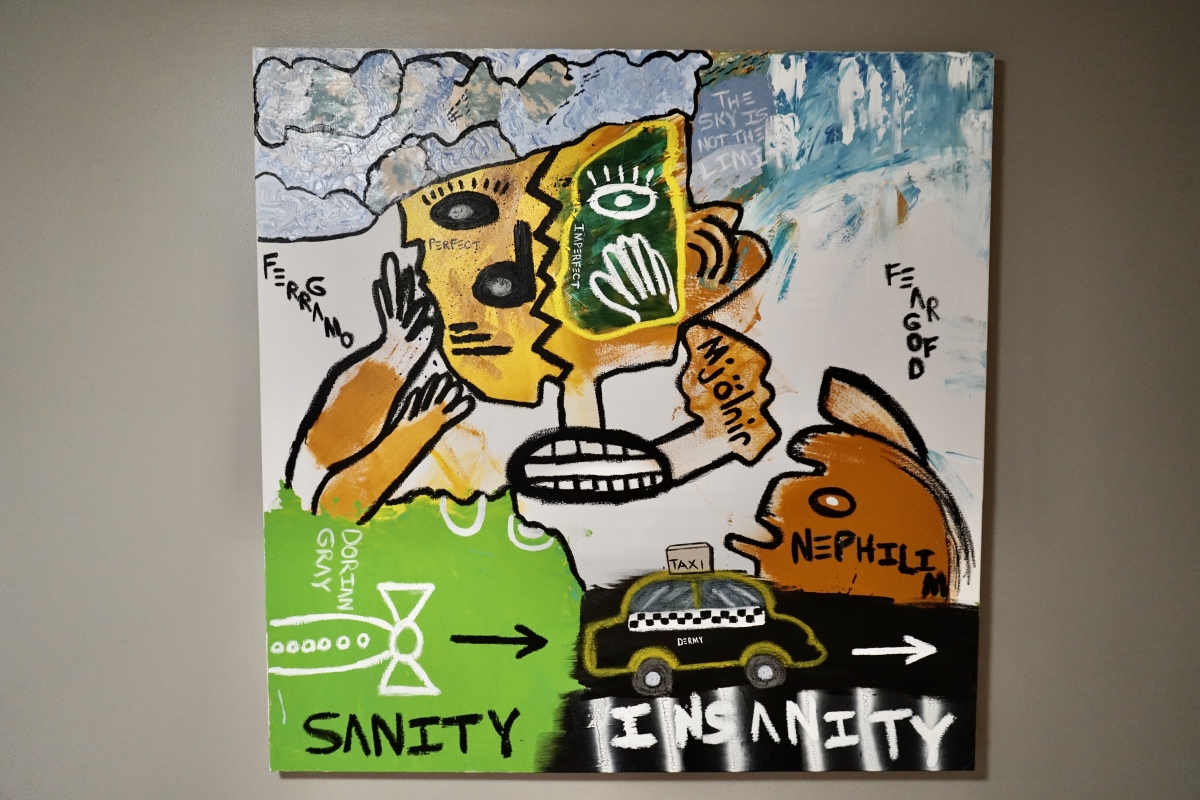
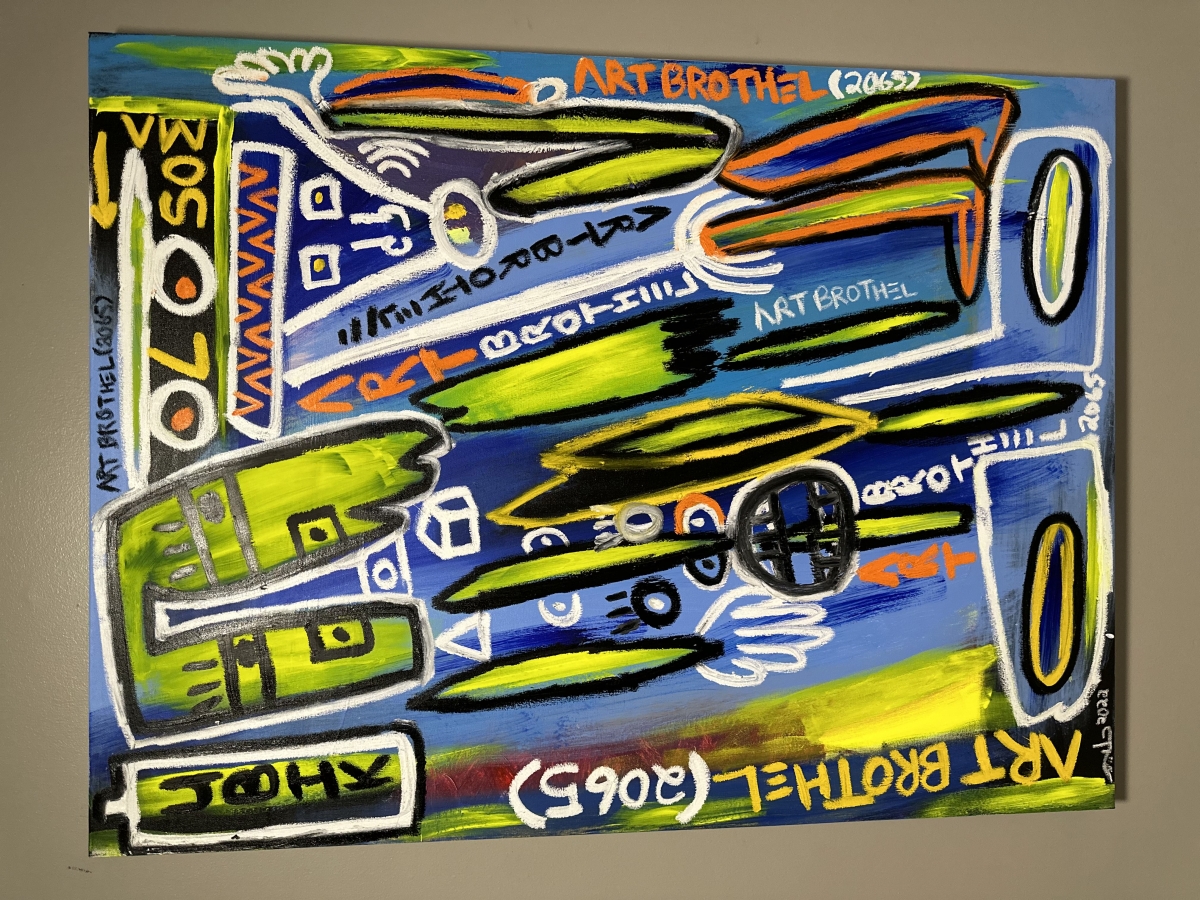
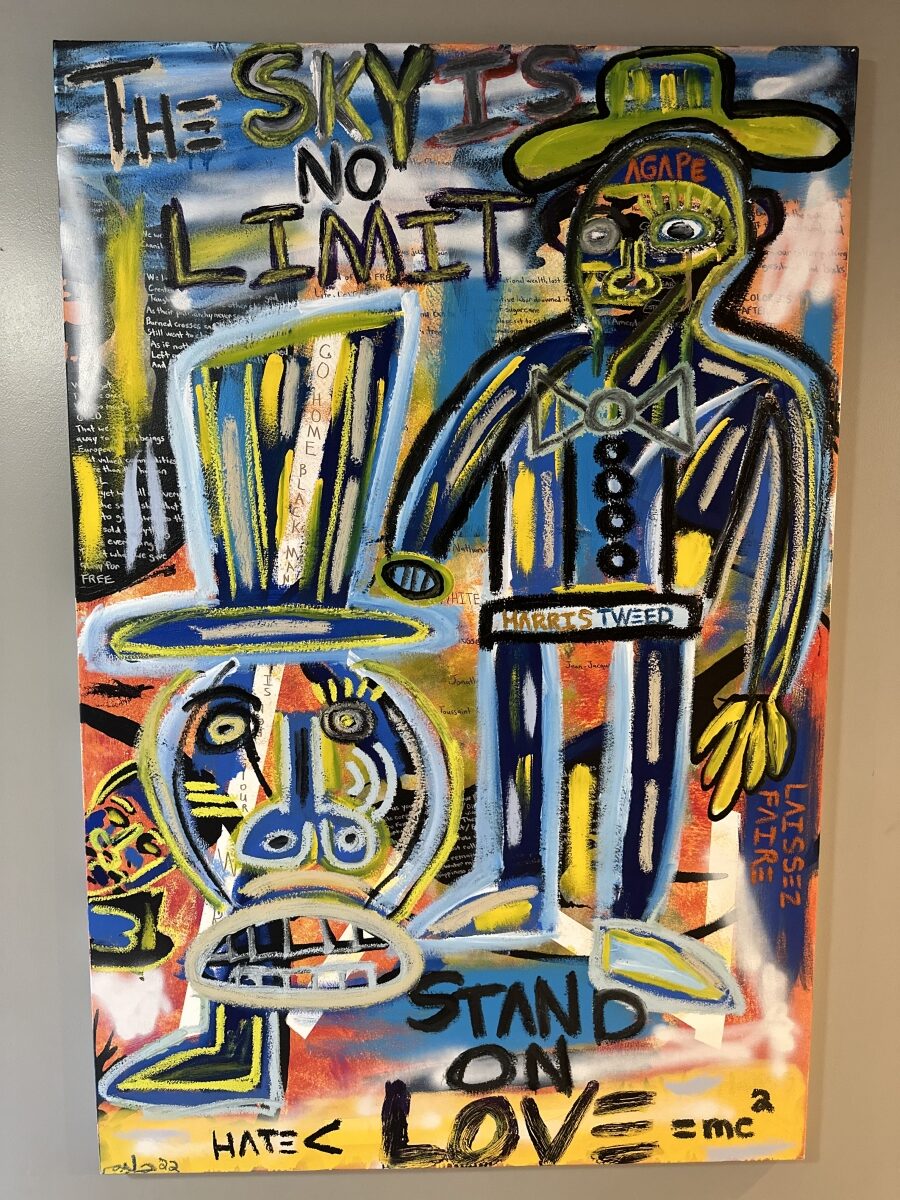
If you could do creative projects with other artists, who would they be?
I would like to collaborate on a series with my wife, who taught me how to paint. We collaborate often, but we have never done an exhibit of our work together.
I am currently collaborating with Clarence James, another artist that is also represented by DTR Modern Galleries. And, I am in the process of starting a collaboration with artist and fashion designer Chris Pyrate. Lastly, I am working with photographer Nigel Barker to create a series of paintings from a photo shoot that we did together.
Though, in my dream world, I would like to work with Mark Bradford, Damien Hirst, and Kara Walker.
Would you like to experience other artistic disciplines?
As mentioned earlier, I published eleven books. I am also a spoken word artist. I just released my first rap album this year. Furthermore, I had my first fashion show in September during New York Fashion Week. The next discipline that I would like to venture into would be DJing. I’m really serious about that.
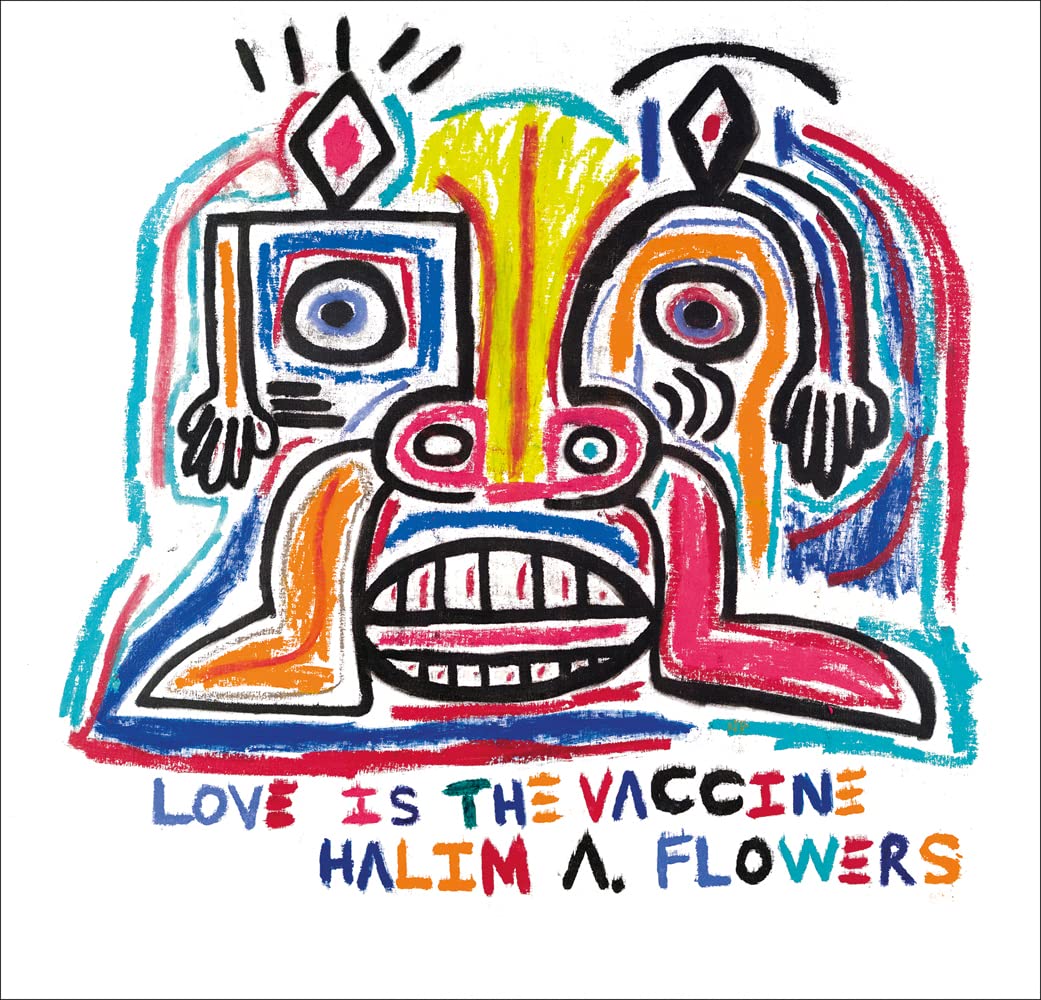
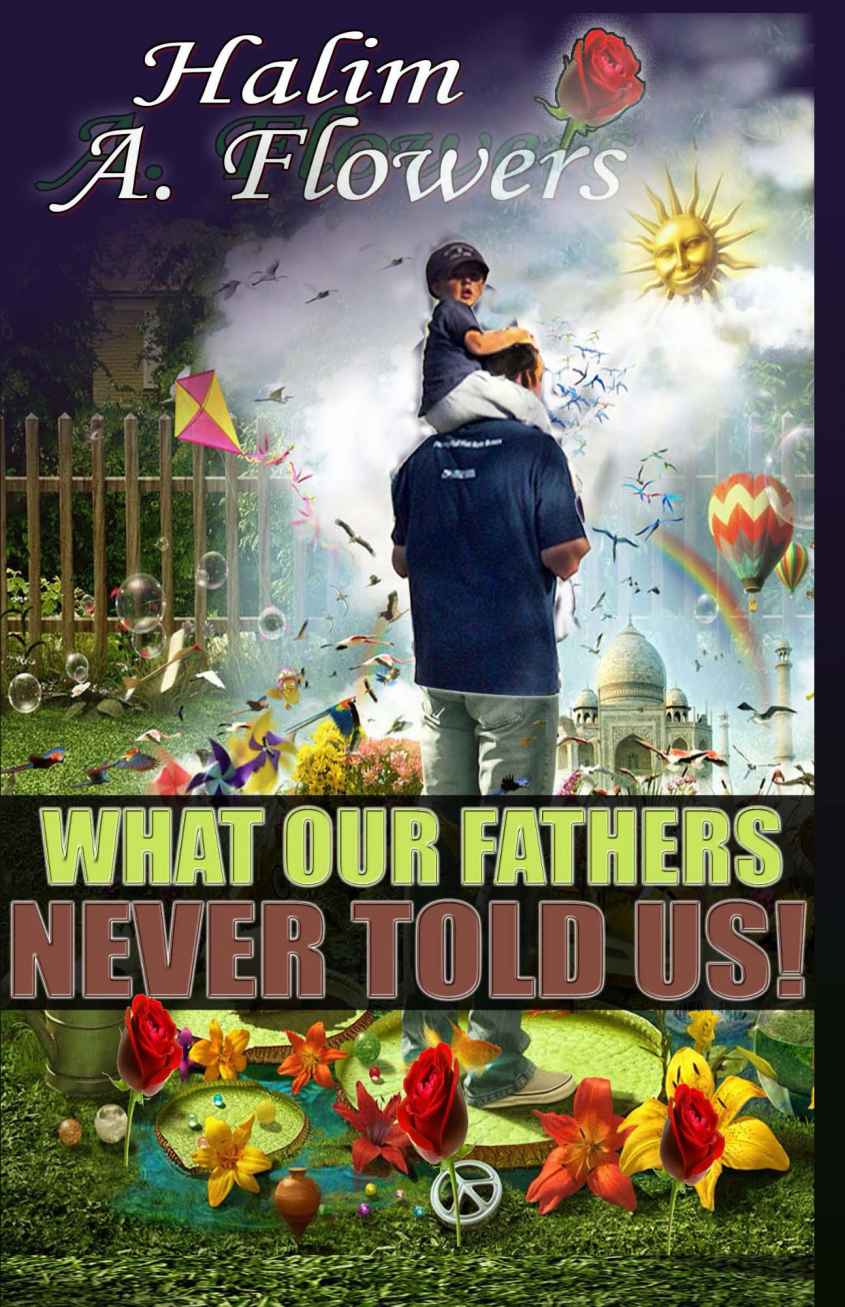
What other things do you like to do when you have free time?
I love to exercise, moderately. Not those crazy prison workouts that I once did. I love to talk. I love conversations. My wife says that I talk on the phone too much.
In prison, you only get 300 minutes per month to talk to people on the phone. It was so limiting. Therefore, I tend to engage in conversations on the phone for hours. It is where I get my best ideas and conversations. I love stimulating conversations. Most of my free time goes to conversations, observing my two-year-old daughter and learning from her, watching old boxing matches, and watching documentaries on YouTube.
I still read and write poetry as well. But I don’t consider that free time because it’s deeply connected to my work. So, I would have to say that my free time goes into conversations. Mostly with other artists that have no idea how the business side of the art world works, and want my advice on how to approach galleries, collectors, curators, and pay the IRS. A lot of my artist friends with MFA degrees trade me their expertise on art techniques for my advice on the business of art, which they say the MFA programs neglect to teach them.

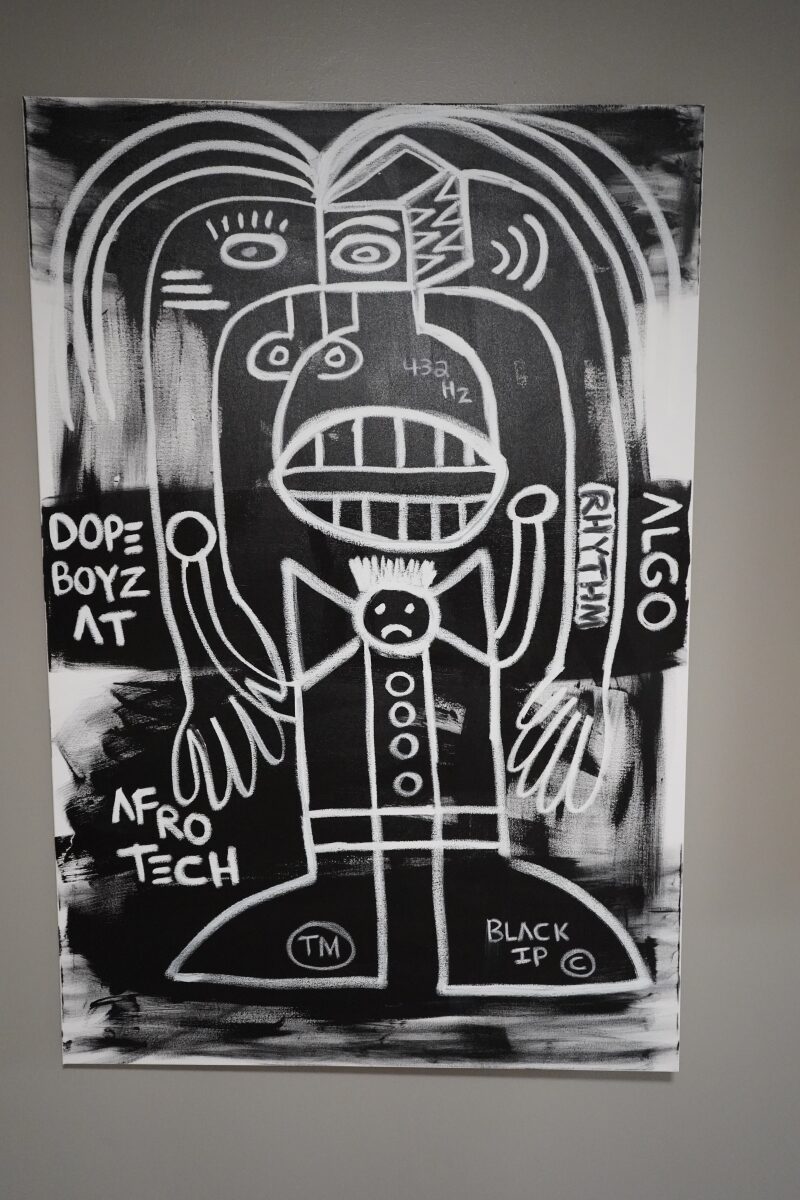
How do you see your work evolving over the years? What message would you like to convey through your art?
I only started painting in 2020 during the quarantine at my wife’s suggestion. Visual art is so new to me. I’ve seen my art evolve in just two years. The core message in my visual language has always been love, whether it was ‘Love Is the Antidote’, ‘Love Is the Antibody’, or ‘Love Is the Vaccine’. My works embody the word for love in many different languages like agape, amor, or ahavat chinam. I’m always looking to incorporate love into every canvas in some form.
My evolution will come in finding different objects to use as canvases. I want to paint on refrigerators, cars, bridges, trains, planes, buildings, couches, clothes, file cabinets, and computers. I want to design homes, decor, and smart cities that are energy efficient, safe, and aesthetically pleasing. I also want to design curricula that inspire children to dream and create products and advocate through love and product development to empower others towards seeing humanity as interconnected and not divided by harmful social stratifications and constructs.
What would you say today to your former 17-year-old self?
I would tell him that the greatest prison is the one he created where he started to become something other than his true self to impress people that would abandon him completely during the moment when he will need them the most. I would tell him that he shackled himself when he scored high on his Pre-SAT exam when he was 11 years of age and he dumbed himself down in school to fit in with the cool kids because Black intelligence wasn’t celebrated in his community like Black violence and consumerism were. I would tell him that the key to his freedom would be found in being the person that you were that loved video games, math exams, comic books, rap music, and staying up till sunrise talking on the phone with childhood girlfriends.
Favorite Phrase…
“It is by words that we convey our thoughts and bend others to our will.” (George Jackson, Soledad Brother)
Many thanks to:
-Karli Williams
-Aaron Koschitzski
-Barbara Jones
Artist website: Halim Flowers
Editor: Kristen Evangelista
